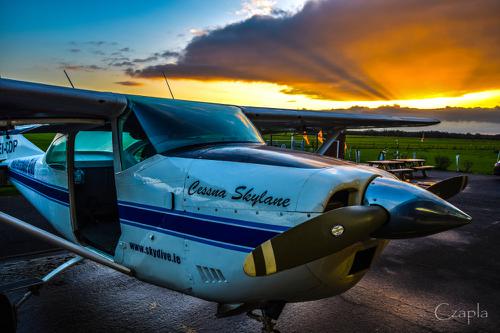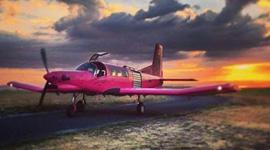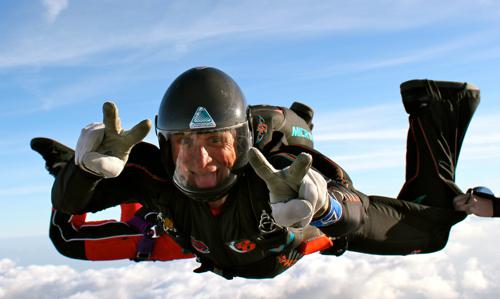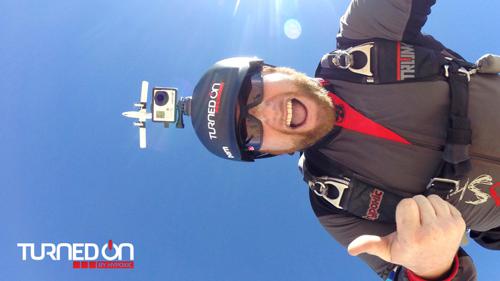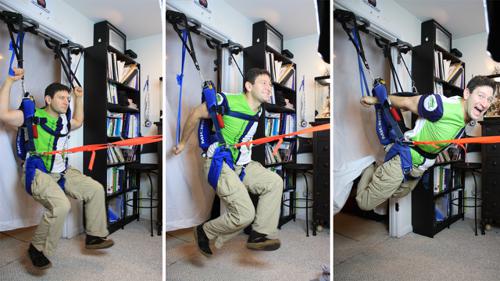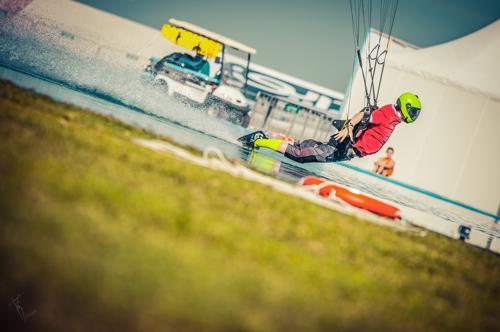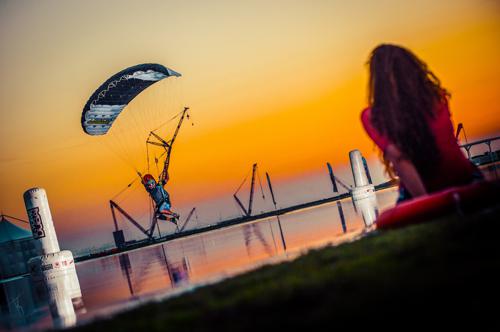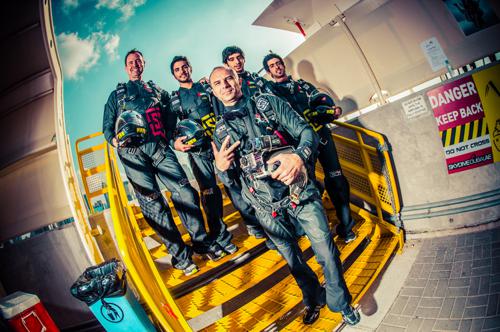Niklas Hemlin - Breaking Boundaries
Image by Ben Nelson
Niklas Hemlin of Arizona Airspeed ventured out with a goal in mind and captured his first World Record - but not in belly flying, in the new category, Head Up. Not many long-term and committed belly flyers transition over to freeflying later in their skydiving careers. Especially one that has invested most of their lives into belly flying. It's refreshing to see that the boundaries of belly flying and freeflying are starting to blend.
Name: Niklas Hemlin
Jumps: 15,500+ (just below 16,000)
RW Jumps: 13,000+
Freefly Jumps: 100
ML: How many competitions have you been to?
Niklas Hemlin: I have attended 35 national and international recognized competitions. You couple probably double that number if you were to include local and none recognized events.
ML: How many medals have you won?
Niklas Hemlin: More than 35.
ML: Do you have any previous world records, if so, which ones?
Niklas Hemlin: I do not have any belly big formation world records J This would be my first big-way world record. I have an un-official world record with Airspeed for the highest 4-way average from when we won the World meet in Dubai 2012 at 27.9 average points.
ML: What motivated you as a young jumper and how did you get the idea to tryout to be on Airspeed?
Niklas Hemlin: What motivated me as a young jumper was the next jump. I was head-over-heels in love with our sport and the whole nature of it…jumping out of a plane, plunging towards the ground in freefall, pulling your parachute, and safely land to do it all over again. Since then, my love is all the same and more intense than ever. I seem to effortlessly find new ways to keep my passion and intensity for our sport. It has so much to offer me and it is literally limitless. To me, it’s a lifestyle and way of life.
ML: What is your new position on Airspeed?
Niklas Hemlin: I used to be the inside center and now moved to the point position on Airspeed. Each position on a 4-way team comes with its own style and characteristics. Throughout my 4-way career, I have been floating around all the different slots and found that each offer its own challenges and satisfactions. It is always fun to be put in a situation to learn and refine a new style and to push yourself. To me, it keeps it all fresh and motivating. Performing any slot on a world-class level requires absolute dedication and focus.
ML: You're more known in the community to be an RW skydiver, when did you start freeflying?
Niklas Hemlin: I seriously started to freefly January 2014. I did do some freeflying back in 1997 here at Skydive Arizona after spending three months in Florida training with my Swedish 4-way team. Since then, I haven’t done any freeflying until I started up in the tunnel this year. I have managed to accumulate about 50 hours in the tunnel YTD and around 100 freefly jumps. I hope to meet my goal of 52 hours of tunnel for this year and 150 jumps.
I’m a very goal oriented person and find it hard to keep my competitive spirit at bay. I had a goal of getting to a level in my freeflying that I could go and fly in the tunnel and in the air for fun and hold my own. I remember very vividly seeing people fly in the tunnel and in the air and wanted nothing more than to fly like them, effortlessly float through the air on all angles and on all their body’s flying surfaces. I looked so appealing and fun to me.
Airspeed is my heart and soul and takes up a lot of time and dedication. It takes all you time and devotion to become a world champion or a world class flier in any discipline. That being the case, I felt I had to spend the 2014 season to learn freeflying before I transitioned back onto the team as an active member from being an alternate for the 2013 and 2014 seasons.
ML: What motivated you to participate in the upright world record?
Niklas Hemlin: To put myself in a situation where I HAD to perform. I remember seeing and hearing about the upright record and the headdown big-way scheduled for the fall at Skydive Arizona. I used it as a goal to progress enough to where I could at least participate in the upright warm up weekend. That was enough motivation for me to keep my focus and training. The warm-up weekend went well enough that I was asked to participate in the record attempt.
To be honest, I was, and in my opinion still am, not very good on my headup. It is a challenge for me because I really struggle with getting the hang of it and become as comfort and fly as effortlessly as I see others fly.
Image by Ben Nelson
ML: Can you tell me what kind of struggles you had on the record jumps and how you overcame them?
Niklas Hemlin: The most overwhelming part of the headup warm-up and record was my visuals. What is left and right headup is right and left headdown. Wow, flying headdown to the formation from exiting head up and then get there to transition back into headup. Oh boy, that was a mind f*#ker (teaser). To be honest, I did not figure than one out until the second day of the record. The second biggest challenge for me was to keep my mind at bay. I was filled with excitement and anxiety and had to calm myself and focus on my basics. Freeflying is not all instinctive and I have to think about what I’m doing and what I need to do. So, if I don’t keep calm and anticipate my flying, it all goes to shit.
ML: How much of the Upright World Record principles were like belly fly big ways?
Niklas Hemlin: I would say a good 99.9%. That was a huge advantage for me having so much experience with big-ways. That was the easy part. At least I didn’t have to stress out about that.
ML: What would be your advice to other belly flyers about getting into freeflying?
Niklas Hemlin: Lower your expectations and embrace the whole process of sucking. Do it for fun and understand it is nothing like belly flying, but at the same time, it is just like belly flying. For me, it was very healthy and humbling to “suck” at something again. It was very refreshing to be a student again and having to learn and unlearn. Being the guy in the room with the least amount of experience and, literally, being a safety hazard was a lot of fun for me. Just something about being in the early stages of something new and falling in love with it and not being able to get it out of your head. Oh yea, and it will improve your belly flying tremendously!



